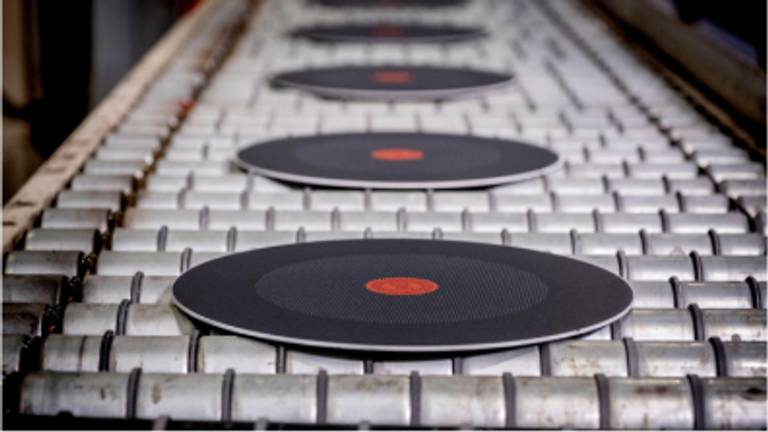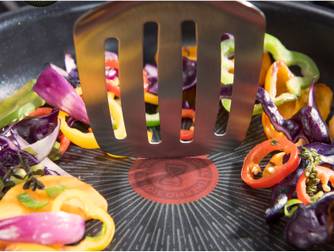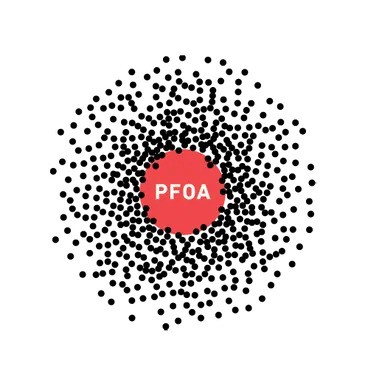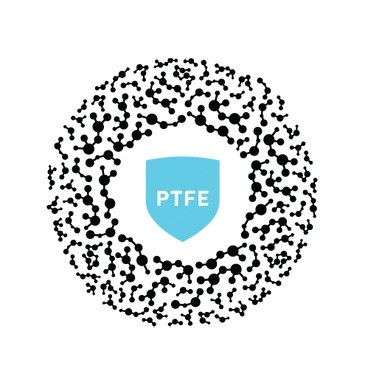PTFE: The Non-Stick Material That Wins Our Customers Over
What is PTFE?
Polytetrafluoroethylene, commonly known as PTFE, is a polymer compound discovered in 1938 by the scientist Roy J. Plunkett (1910-1994). Studies conducted by public health authorities in Europe and the United States have demonstrated the safety of PTFE. It is a substance that poses no danger, even if accidentally ingested.

Safety, Efficiency, and the Joy of Cooking With Less Fat
PTFE does it all.
PTFE meets our stringent standards for quality, performance, and safety. At Tefal, we oversee every stage of production, and our coatings are proprietary and exclusive.
Tefal Pans Are Not Made With TEFLON™
Historically, Tefal used TEFLON™-branded coatings for its non-stick pans. However, when Groupe SEB acquired Tefal in 1968, it chose to internalize the production of its own non-stick coatings to better control and manage all stages of production.

What Are the Characteristics of PTFE?

The Most Non-Stick Material
Its non-stick properties allow for the cooking of even the most delicate ingredients without the need for added fat. This material ensures optimal cooking for consistently great cooking results every day.

Tested and Approved
Studies conducted by public health authorities in Europe and the United States have confirmed the safety of PTFE. It is a substance that poses no risk, even if accidentally ingested. The molecules are too large to be absorbed by the body.

Durable
Whether in cold or hot conditions, PTFE remains stable, even at the high temperatures typically reached during cooking.
The PFAS Family
Polyfluoroalkyl substances, or PFAS, refer to a large family of substances (about 5,000).

Non-Polymer PFAS
These can be problematic because they are bioaccumulative, meaning they can build up in the human body (e.g., PFOA or PFOS). This is not the case with polymer PFAS.

Fluoropolymers
Like PTFE, they are non-bioaccumulative, inert, and considered non-hazardous to human health.
PTFE: A Safe Material
PTFE has been recognised by health authorities such as the World Health Organization (WHO) and the European Food Safety Authority (EFSA) as a material that poses no risk to human health and is safe for food contact. Beyond its exceptional non-stick properties, it is due to this demonstrated safety that Tefal has chosen PTFE coatings for its pans and pots.
Our Tefal Non-Stick Coatings Are Free From PFOA, Lead, and Cadmium*
* Our standards are stricter than those required by current food contact regulations. Free from PFOA according to current regulations. Free from lead and cadmium (no Pb and no Cd) means that no intentional addition of lead or cadmium has been made in the coatings, and these metals have not been detected in tests conducted by external laboratories.
Questions and Answers
1) Key Points
- TEFAL does not use any PFAS considered carcinogenic by health authorities.
- TEFAL has not used materials containing PFOA since 2012, even before regulations were implemented in Europe and the United States.
- Products manufactured by TEFAL do not contain PFOA. Our products are regularly tested by independent laboratories to ensure this.
- TEFAL uses PTFE, known for being inert, non-bioaccumulative, and therefore safe for human health, as recognised by health authorities.
- TEFAL also pursues a strategy of diversifying its product offerings to meet the diverse expectations of all its customers.
- Finally, TEFAL is committed to continuous innovation with the aim of improving its products. This can be seen particularly in the increasing durability of its non-stick coatings.
2) PTFE / PFOA / PFAS and Other Substances
A. What is PTFE?
- PTFE, or polytetrafluoroethylene, is a fluoropolymer.
- Used in non-stick coatings, it consists of a chain of thousands of carbon atoms, each bonded to two fluorine atoms. This structure gives PTFE exceptional chemical stability, making it harmless to human health.
- It also provides exceptional resistance to high temperatures and a high level of slipperiness, making it ideal for non-stick coatings in pots and pans.
- The World Health Organization (WHO), the International Agency for Research on Cancer (IARC), and health authorities in France, Europe (EFSA), and the United States (FDA) have all confirmed that PTFE is harmless to human health. Tefal's non-stick coatings are approved for contact with food.
B. Where is this PTFE produced?
- PTFE is one of the base materials used in formulating non-stick coatings.
- It is produced by leading international chemical companies, selected under TEFAL's responsible purchasing policy (based on ethical, social, and environmental criteria) and according to strict specifications. These companies are regularly audited.
C. What reference studies do health authorities use to demonstrate that PTFE coatings pose no risk to human health?
- Public health authorities in Europe and the United States have demonstrated that PTFE is an inert substance with no effect on the human body when ingested. These same authorities have confirmed that PTFE coatings pose no health risk when used in cookware.
- Following a study by the IARC, the WHO classified PTFE in Group 3 [Volume 19, 288 (1979) and Supplement 7.70 (1987)], recognising that it is not carcinogenic to humans.
- PTFE is so harmless that it is frequently used in the medical field (e.g., pacemakers, artificial arteries, prosthetics).
D. What does the term PFAS refer to?
- PFAS (perfluoroalkyl or polyfluoroalkyl substances) refers to a large family of substances with a wide range of chemical properties.
- Much of the available information, especially on the internet, creates confusion by failing to clearly distinguish between PFAS known to be harmful, such as PFOA, and other chemical compounds considered part of the same family but without impact on health or the environment, such as fluoropolymers (PTFE).
E. Do your pans contain PFAS?
- TEFAL products do not contain PFAS that are considered harmful to health or the environment by health authorities.
- Several TEFAL product lines are made with a PTFE-based non-stick coating, a safe component approved by authorities such as the U.S. Food and Drug Administration and European authorities for use in non-stick cookware.
F. How do you ensure the absence of PFAS in your products?
- Our products are regularly tested by independent laboratories to verify the absence of PFAS considered problematic in the finished products and to ensure the complete safety of TEFAL-manufactured products.
- We ensure that no PFAS are detected using the best available techniques on the market today, with our analysis going beyond regulatory requirements.
G. What is PFOA?
- PFOA is a short-chain PFAS. It is persistent in the environment and accumulates in living organisms, where it can have harmful health effects.
- Tefal and its suppliers have not used PFOA in their processes since 2012, well before the introduction of regulations. Independent laboratories regularly test our cookware, consistently confirming the absence of PFOA in TEFAL products.
H. Is PFOA used in TEFAL cookware made with PTFE?
- NO
- Tefal and its suppliers have not used PFOA in their processes since 2012, well before the introduction of regulations. Independent laboratories regularly test our cookware, consistently confirming the absence of PFOA in TEFAL products.
I. Is PFOS used in TEFAL cooking products made with PTFE?
- NO
- TEFAL has never used PFOS in the manufacture of its products. Our products do not contain PFOS.
J. Does the new RENEW range contain PFAS?
- Our RENEW cookware range features a ceramic INOCERAM coating that, due to its chemical nature, does not contain PFAS.
K. Are any of your products made with Teflon?
- Teflon™ is a registered trademark of Chemours, a major global chemical company, and there is no connection between Chemours and Tefal.
- TEFAL brands, including Tefal and T-fal, manufacture cookware with PTFE non-stick coatings. They do not use Teflon™.
3) Consumer Safety
What is the risk of using a scratched non-stick pan? Or ingesting pieces of the coating?
- French, European, and U.S. health authorities have all confirmed that PTFE is harmless to health and recognised it as an inert substance with no effect on the body when ingested.
- Accidental ingestion of any part of the coating is safe. The human body does not absorb the particles, which remain harmless.
- As studies conducted by the International Agency for Research on Cancer (IARC) have shown, ingested PTFE particles pass through the body like any other fibre, moving through the digestive system without being absorbed. Due to its high chemical resistance, PTFE has no effect on the body when ingested.
- However, scratches may reduce the non-stick qualities of the cookware, so we recommend following the brand's usage instructions and replacing it if the coating is damaged.
4) Regulatory Questions
What is TEFAL's position in the face of potential regulatory changes in the United States and Europe in the coming years?
- TEFAL always places the well-being of its customers at the heart of its concerns. Accordingly, we consistently act to stay ahead of national and international regulations.
- We assure you that we closely monitor updates from all qualified authorities regarding the compliance of our products and claims, and we always act accordingly. Our teams are currently closely following developments following the publication of the draft report on PFAS restrictions, as released by ECHA.
- TEFAL disagrees with the attempt by some countries to ban the use of all PFAS without distinction. Indeed, PFAS cover a wide family of substances with very different and useful chemical properties. Consequently, TEFAL is seeking to have recognised the uniqueness of PTFE which it uses for its non-stick coatings
5) Employee Safety in Our Factories
What risk prevention policy do you have in place at your sites?
We are committed at every stage of our manufacturing processes to adhering to prevention principles:
- Selecting the most suitable raw materials from a health, safety, and environmental perspective.
- Capturing emissions and protecting employees at the source. For example, our PTFE spraying lines are all equipped with source extraction at every emission stage of the process. Systems are in place to continuously monitor the proper functioning of these measures.














